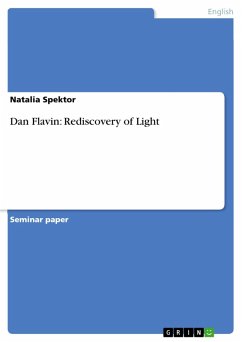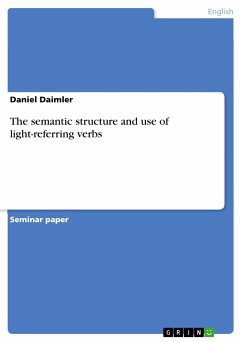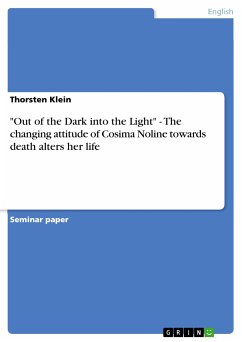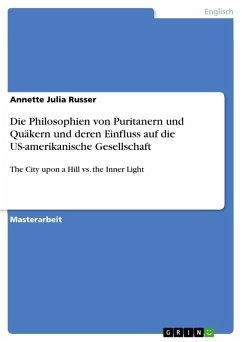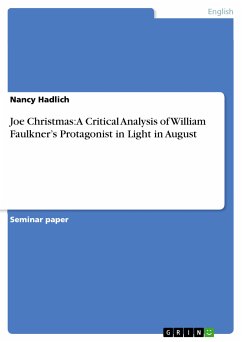Seminar paper from the year 2012 in the subject English Language and Literature Studies - Other, grade: 2,0, University of Cologne (Englisches Seminar), language: English, abstract: In 1957 Flavin began to experiment with drawing and fashioning hybrid collages and assemblages, mostly made with found materials. Four years later, he created the first of eight icons: boxy, monochrome-painted constructions outfitted with incandescent bulbs and short fluorescent tubes, wall-hung objects, which are neither painting nor sculpture and which represent his first use of light. He worked on icons consistently for three years, constructing the objects by using hand tools and then painting them. Dispensing altogether with the traditional materials of painting and sculpture, Dan Flavin adopted common commercially available fluorescent light as the primary medium for his art. He preferred “standardised, utilitarian fluorescent light to custom-designed, showy neon”. As Michael Govan notes, Flavin confined himself to a limited palette (red, blue, green, pink, yellow, ultraviolet, and four different whites) and form (straight two-, four-, six-, and eight-foot tubes) (see 2004 (II): 19). In most cases, Flavin named his works as “untitled” but often added a dedication. Furthermore, he used lower case for inscription except for proper names and places. Many of his woks have the same or similar titles. Further, with the diagonal of May 25, 1963 Dan Flavin established a “system”, as he himself called it, which is “a structured whole, and whose parts are replaceable” (Flavin 1965: 24). To understand his “system” and oeuvre as a whole, a special attention should be paid to the following questions: •Why did Flavin choose light as a medium for his works? •How did he understand and define the phenomenon of light? •Which influences were significant for Dan Flavin’s art and why? •Why did he choose exactly an icon and later the diagonal as a form of representation for his first light works? •Which ideas, meanings and principles are veiled in his works? •What was new in Flavin’s rediscovery of light? To answer these questions and to consider the significance of his artistic work in the art historical context, Dan Flavin’s oeuvre and the development of his artistic style will be analysed through his key works with fluorescent light from different periods of time.
